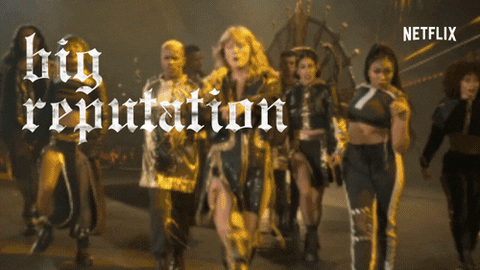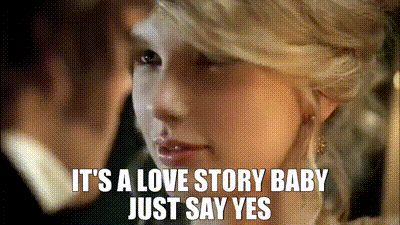
While swifties are enjoying their Eras era, the world of adtech is grappling with its identity crisis era. Under pressure from regulators and consumers alike, advertisers are working to balance the demand for personalization with the need for increased data privacy. And while many marketers might wish they could just shake it off (à la 2014 Taylor), the need for privacy-friendly advertising solutions isn’t going anywhere.
If, like TSwift, you know this challenge all too well, then this post is for you. Though there’s no quick fix to the identity crisis, there are tools and solutions that can help.
One of the most powerful solutions for advertisers to have in their identity crisis toolkit? Digital advertising automation. Today, we’re exploring how advertising automation can help marketers survive—and, dare we say, thrive—as they navigate the identity crisis.
As we wrote this post, we couldn’t help but notice how seamlessly TSwift references and puns slipped their way into it. Maybe it’s because she’s secretly a marketing whiz; or perhaps it’s because we’ve been spending hours each day bingeing videos from her Eras tour. Whatever the reason, buckle up for a deep dive into how automation can help your team through the identity crisis—as told through a collection of Taylor Swift lyrics, song titles, and gifs.

Let's dig in.
Long story short: the conflicting demands for increased data privacy and for personalized advertising experiences are coming to a head.

Was Taylor Swift talking about these competing pressures when she wrote this line?
To add a bit more detail: Over the past several years, more and more data privacy-focused regulations and changes have popped up (both in the US and across the globe), including the impending deprecation of third-party cookies in Google Chrome.

Who knew third-party cookies could develop such a big reputation?
Though there’s a lot of hype around Google, other browsers have long since parted ways with third-party cookies. Couple this with the recent explosion of privacy-related legislation and regulation and the fact that 86% of consumers say they have a growing concern about data privacy, and it’s clear that now is the time for advertisers to explore privacy-friendly solutions.
To make things even more complex, consumers still want personalized advertising experiences from brands and companies. In fact, 90% of consumers say they enjoy receiving personalized offers, and 56% expect all offers to be personalized.
It’s a perplexing problem to address. How can marketing teams adapt to the identity crisis and balance the complexities of today’s digital media landscape and still provide personalized advertising experiences that resonate with audiences? It’s a question we’re all figuring out together—but let’s explore how digital advertising automation can help.
Advertising automation is a term that encompasses a wide range of technologies and strategies aimed at optimizing the campaign process from start to finish. And if it sounds like something out of your wildest dreams, we get it. We’re enchanted by it too (Too many TSwift song references in a row? Sorry, [we’re] not sorry!) Especially within the context of the privacy-first transition, automation can simplify marketers’ jobs in many ways:
In the privacy-centric present, first-party data is of the utmost importance. Since it’s data that audiences willingly give to brands and companies, it is inherently privacy-friendly and allows for accuracy in personalization and targeting. As such, it’s something that, in the words of Taylor Swift, will never go out of style.
But what does automation have to do with first-party data? Since it is collected and housed in a customer relationship management (CRM) platform, the process of uploading this CRM data can often be complicated and time-consuming. By using an advertising automation platform with built-in integrations that allow direct uploading of CRM data, advertisers can speed up the process and access targetable audiences with greater ease.
The average advertiser uses seven platforms in a typical day and nine in a typical campaign. NINE. DIFFERENT. PLATFORMS.

Same, Taylor. We feel the same.
Embracing advertising automation means consolidating those point solutions into a single, universal platform where teams can handle every stage of the campaign—from planning, to automated media buying, to reporting and billing.
Making this shift can significantly free up marketers’ time and energy, thus allowing and empowering them to test different privacy-friendly solutions and determine those that work best for their brand and audiences.
Remember how we mentioned that consumers not only want increased privacy, but also want personalized ads? Yeah, like TSwift once said, it’s a delicate balance (okay, we might be paraphrasing, but you get the gist). Luckily, advertising automation makes it easier to use the latest technological advances to reach audiences with personalized messaging.
For example, artificial intelligence-enabled predictive modeling can help advertisers to quickly identify audiences and serve them personalized placements. And dynamic creative optimization (DCO) offers the ability to automatically craft thousands of creative variations to serve to distinct audiences.

Just remember—if Taylor made it out of these woods, you can make it out of the identity crisis.
Advertisers today face a significant challenge: They must connect with audiences in privacy-friendly ways, while still personalizing ads based on individual consumers’ wants, needs, and preferences. Advertising automation is a powerful solution that can free up marketing teams’ time and resources, as well as allow them to create impactful, personalized advertising experiences.
To sum it up, identity crisis + advertising automation =

__
Learn more about the power of advertising automation with our guide Meeting the Moment with Advertising Automation.